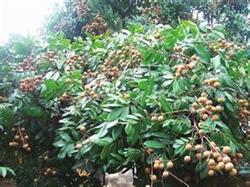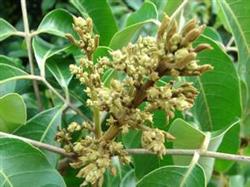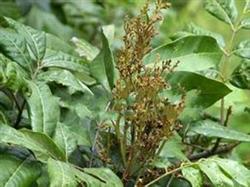Autumn management of longan grape

Longan autumn shoot attack period. Due to different planting areas, longan growth state is also different, the first shoot just out, according to the variety characteristics and orchard conditions, cultivate good autumn shoots. (1) Spray to protect new shoots. At present, the new shoots of longan are damaged by longan angle cheek psyllid, litchi gall mite, longan sea wheat moth, etc., spraying pesticides at the time of new shoots germination. (2) Fertilization, shoot attack and strong shoot. Longan fruit more, nutrient consumption, tree accumulation reduced, affecting the quality of the first shoot, in addition to soil fertilizer, organic fertilizer and available nitrogen fertilizer, but also in the process of shoot growth should be sprayed agricultural nucleotides or other foliar fertilizer.③ Timely drainage or sprinkling. After rain, orchard ponding, to remove in time, especially sticky orchard. Water should be showered in time during drought, and water shortage will affect the growth of new shoots in addition to delaying shoot development. (4) The orchards which shoot out in late August or early September should strengthen management, spray agricultural nucleotides +0.1%~ 0.2% nitrogen fertilizer to promote the growth of new shoots, and strive to shoot out the last autumn shoots in late October. (5) thinning branches. When the leaves of the first new shoots turn green, thinning can be carried out. The main thinning is to remove excessive new branches from the pruning mouth. Generally, 2~3 new shoots are retained after pruning, and the rest of the new shoots are thinned to the extent that the branches are not directly exposed to the sun. In some over-pruned orchards, the new shoots on the trunk should be properly retained, and the crown should have certain branches to grow in order to ensure the humidity in the air and prevent exposure.
- Prev

New cultivation techniques of promoting Flower in Longan in four Seasons
Longan is a subtropical evergreen fruit tree, which originated in the provinces of southern China and has been cultivated for more than 2000 years. Longan fruit is of high nutritional value and delicious, which has the effects of tonifying the heart and spleen, nourishing blood and calming the mind, preventing vascular hardening and anti-aging. Under natural circumstances, longan flowers need cool, dry and other climates.
- Next

Longan fertilizer and water management
First, the symptoms of tender shoots, leaves and flowers can be damaged, and show obvious symptoms. The young leaves on the diseased tip are narrow, light green, the leaf margin is curly, can not be unfolded, showing a tube shape; in severe cases, the whole leaf is linear and smoky brown. The leaf surface of the growing leaf is uneven, the leaf edge often curls and wrinkles to the back of the leaf, and the leaf tip bends downward.
Related
- Moge, come on! The staff of the peasant association in the producing area of cantaloupe were frightened when the crowd gathered.
- Causes and Solutions of low Fruit setting rate of Apple
- Symptoms and control measures of passion fruit virus disease
- Fruit growing lesson: how do apple orchards keep high yields?
- Can you build orchards in the mountains? What are the pros and cons?
- How to manage the coloring period of Crisson grape?
- This paper introduces the processing technology of two kinds of fig products.
- How much is a month for retired teachers in rural areas by 2020?
- How can strawberry planting increase sugar content? We should pay attention to management in many aspects.
- What are the cultivation techniques on how to improve the yield of golden fruit?

